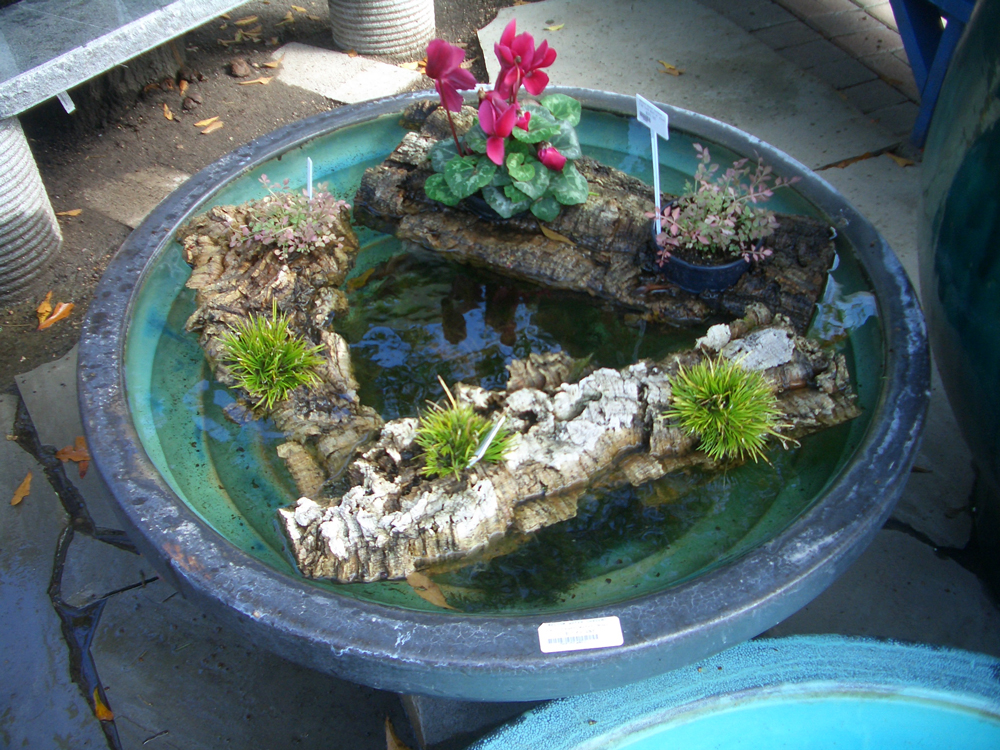Natural Filtration 301 Chapter 4
More Efficient Passive Filtration, Planted Floating Rafts

Floating planted islands take the concept of bog filtration one step further. Not only is contact along the continuous perimeter maximized, but the roots pass through the raft and hang down below, creating tremendous surface area for biofilm and new habitat for all the little critters that help maintain a healthy ecosystem, bacteria to paramecia, insect larvae to fish fry. Although hardly a scientific assessment, observations suggest that it takes only about half as much surface area planted in planted rafts to equal the algae control of passive Perimeter Bog filters. This could be just the result of the greater root contact with water, but also may be because the material that rafts are made of generally has far more surface area than smooth gravel, so it supports more of the bacterial biofilm that drives nitrogen conversion. More nutrient conversion right at the plants’ root zone tends to accelerate plant growth which will in turn increase nutrient uptake, in an upward spiral. Any material that reliably floats can be used; rough pieces of cork bark with holes for the plants’ roots make a great natural filter for smaller ponds and containers. Larger rafts are usually made of recycled plastics and marine foams, UV stabilized for years of service. There is typically no need for a planting medium as such. As long as the raft is deployed in nutrient-rich waters that the plant roots can hang down into, the raft need only supply a solid support structure. Planted rafts can be sized to fit just about any water feature, planted to different species to pull out a variety of different pollutants and easily moved where needed, so they’re an effective filter for any water feature that stays wet, from small ponds to large lakes and canals, even heavily polluted ones like sewage settling reservoirs.

Floating planted islands take the concept of bog filtration one step further. Not only is contact along the continuous perimeter maximized, but the roots pass through the raft and hang down below, creating tremendous surface area for biofilm and new habitat for all the little critters that help maintain a healthy ecosystem, bacteria to paramecia, insect larvae to fish fry. Although hardly a scientific assessment, observations suggest that it takes only about half as much surface area planted in planted rafts to equal the algae control of passive Perimeter Bog filters. This could be just the result of the greater root contact with water, but also may be because the material that rafts are made of generally has far more surface area than smooth gravel, so it supports more of the bacterial biofilm that drives nitrogen conversion. More nutrient conversion right at the plants’ root zone tends to accelerate plant growth which will in turn increase nutrient uptake, in an upward spiral. Any material that reliably floats can be used; rough pieces of cork bark with holes for the plants’ roots make a great natural filter for smaller ponds and containers. Larger rafts are usually made of recycled plastics and marine foams, UV stabilized for years of service. There is typically no need for a planting medium as such. As long as the raft is deployed in nutrient-rich waters that the plant roots can hang down into, the raft need only supply a solid support structure. Planted rafts can be sized to fit just about any water feature, planted to different species to pull out a variety of different pollutants and easily moved where needed, so they’re an effective filter for any water feature that stays wet, from small ponds to large lakes and canals, even heavily polluted ones like sewage settling reservoirs.




